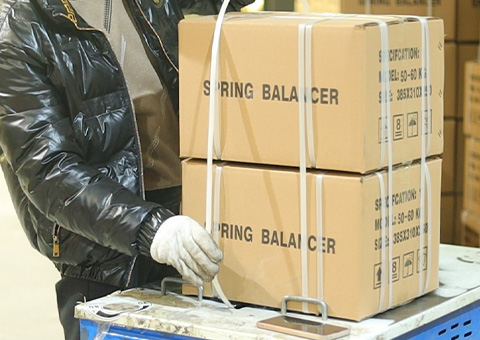steel gantry crane
The Versatility and Efficiency of Steel Gantry Cranes
In the realm of heavy lifting and industrial operations, steel gantry cranes have emerged as indispensable tools. These structures are designed for efficient material handling in various settings, from construction sites to warehouses and manufacturing plants. With their robust construction and versatile design, steel gantry cranes not only enhance productivity but also ensure safety in operations.
What is a Steel Gantry Crane?
A steel gantry crane is a type of material handling equipment that features a bridge-like structure supported by vertical legs. The crane moves on wheels, allowing it to travel along a track or rail. Unlike traditional overhead cranes that are fixed in place, gantry cranes can be relocated, providing flexibility for various operations. The upper bridge can be equipped with a hoist or trolley system to lift and lower heavy loads, making them ideal for transporting large items with precision.
Advantages of Steel Gantry Cranes
1. Durability and Strength Steel is renowned for its strength and durability, making it an ideal material for gantry cranes. Steel gantry cranes can withstand harsh environments, heavy loads, and continuous use without compromising structural integrity. This durability reduces maintenance costs and extends the lifespan of the equipment.
2. Versatility These cranes can be manufactured in various sizes and configurations, tailored to specific lifting needs. They can be designed to handle loads ranging from small items to massive machinery, making them suitable for diverse industries, including construction, shipping, and manufacturing.
3. Mobility One of the primary benefits of steel gantry cranes is their mobility. They can be wheeled into position as needed, allowing for easy adjustment to accommodate different workflows. This is particularly valuable in dynamic work environments where tasks frequently change.
steel gantry crane

4. Cost-Effectiveness Compared to permanent overhead crane systems, steel gantry cranes are often more cost-effective. They require less installation time, and their mobility means they can be used in multiple locations. Additionally, their modular design allows for easy expansion or customization as operational needs evolve.
5. Safety Features Modern steel gantry cranes come equipped with safety features such as limit switches, anti-sway mechanisms, and overload protection systems. These elements help prevent accidents and ensure that lifting operations are carried out safely, safeguarding both workers and equipment.
Applications of Steel Gantry Cranes
Steel gantry cranes find applications across a wide range of sectors. In construction, they are utilized for lifting and moving heavy materials like steel beams, concrete blocks, and machinery. Manufacturing plants employ gantry cranes for assembling and transporting components along production lines. In warehouses and shipping yards, these cranes facilitate the loading and unloading of cargo containers, enhancing efficiency in logistics operations.
Moreover, steel gantry cranes are increasingly used in specialized applications such as automotive assembly lines and aircraft manufacturing, where precision lifting and placement are critical.
Conclusion
As industries continue to evolve and adapt to new challenges, the importance of efficient material handling becomes more pronounced. Steel gantry cranes offer a blend of durability, versatility, and cost-effectiveness that makes them a preferred choice for many businesses. Their ability to enhance productivity while prioritizing safety underscores their value in modern operations. With advancements in design and technology, steel gantry cranes are likely to remain at the forefront of heavy lifting solutions for years to come. Whether in construction, manufacturing, or logistics, these cranes are helping industries meet the demands of contemporary work environments, proving that they are more than just tools—they are essential partners in success.
-
Unlock Seamless Relocation with Our Heavy Equipment Moving ExpertiseNewsJun.06,2025
-
Unleash Unrivaled Flexibility with Our Adjustable Gantry CraneNewsJun.06,2025
-
Unleash Heavy-Duty Efficiency with Our Industrial Gantry Crane SolutionsNewsJun.06,2025
-
Revolutionize Steel Handling with Our Magnetic Lifter RangeNewsJun.06,2025
-
Master Equipment Mobility with Premium Machinery Mover SolutionsNewsJun.06,2025
-
Elevate Your Material Handling with Magnetic Lifter TechnologyNewsJun.06,2025
-
YS Permanent Lifting Magnets: The Smarter Way to Handle SteelNewsMay.22,2025
